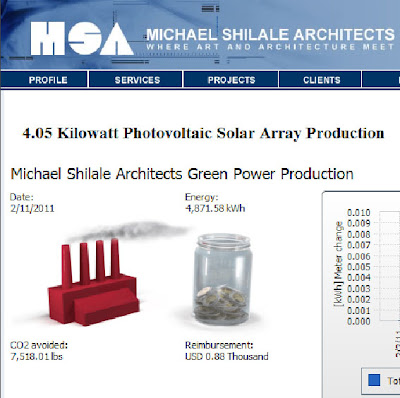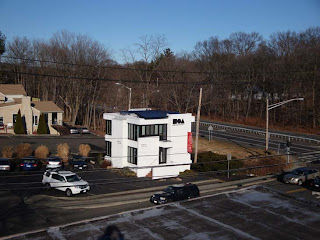We're making numerous renovations to our offices here at Michael Shilale Architects, LLP, all on the road to being an energy efficient,
LEED certified building. One of the many renovations we are most excited about is the renovations that we have made on our roof!
MSA decided that we wanted to take advantage of the amazing energy benefits offered by solar panels - but first our roof had to be renovated. We increased the R Value, or the insulating value, by adding tapered insulation. Now, significantly less heat is lost through the roof, more heat stays inside which = reduced energy! Plus, the insulation is tapered to cause water to run off of the roof and into the drains, which can be collected to water our landscaping.
We also put up a 4-ply built-up roofing system with coal tar product and white gravel. Why the coal tar? It has a low melting point, so in hot weather, it actually flows and re-seals itself. And why the white gravel? It reduces heat absorption on the roof, the kind that black gravel or darker roofing causes. Roofs with this type of insulation and built-up roofing system can last up to 40 years.
After this work was done, we were ready for our solar panels, of which 4 1/2 kilowatts were installed. Quick recap on solar panels: they are made up of photovoltaic cells, which take sunlight and turn it into pure, clean energy and electricity. So now, not only does MSA have a more efficient roof, we also now have a major source of completely clean and environmentally-friendly energy! 30% of our electric load will now be supplied by our solar panels, which have a seven year payback. It is important to note that 50% of the cost of these panels comes from a New York State Incentive, a loan from NYSERDA. You might be eligible for that very loan, and solar panels of your very own! And we can help, so if you’re wondering how this can work for you, just ask!
By Courtney Iseman















